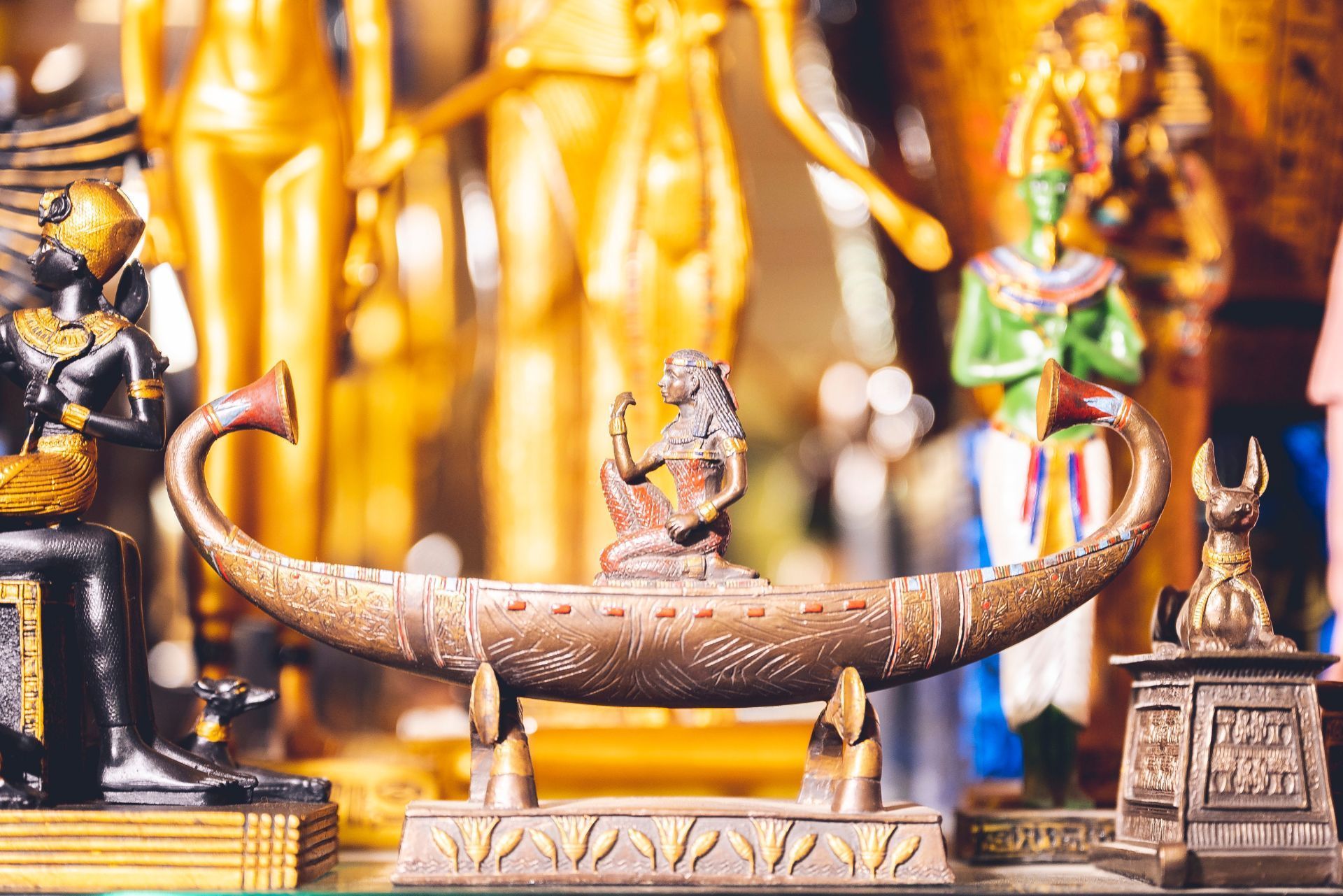Top 3 Recommended Policies

Collectibles can hold significant sentimental and financial value, making them essential assets for many individuals. Whether it’s vintage toys, rare coins, fine art, or sports memorabilia, the need for proper insurance coverage is crucial. In Pennsylvania, understanding the nuances of collectibles insurance can help protect these cherished items from unforeseen events. This article delves into the essentials of collectibles insurance in Pennsylvania, offering insights into types of coverage, how to choose the right policy, and tips for maintaining your collection.
Understanding Collectibles Insurance
Collectibles insurance is a specialized form of coverage designed to protect items that are often not adequately covered by standard homeowners or renters insurance policies. This type of insurance recognizes the unique value of collectibles, which can fluctuate significantly based on market trends and individual item conditions. As the market for collectibles continues to grow, so does the importance of having the right insurance to safeguard these valuable assets.
What Qualifies as Collectibles?
Collectibles can encompass a wide range of items. Common categories include:
- Art: Paintings, sculptures, and other forms of artistic expression.
- Coins and Currency: Rare coins, paper money, and historical currency.
- Sports Memorabilia: Autographed jerseys, trading cards, and equipment.
- Antiques: Furniture, jewelry, and household items that are at least 100 years old.
- Comics and Books: First editions, rare comics, and other literary collectibles.
Each category has its own market dynamics, which can affect how insurance companies assess value and risk. Understanding these distinctions is vital for collectors seeking the right coverage. For instance, the art market can be influenced by trends in contemporary art, while the value of coins may hinge on historical significance and rarity. Collectors should also consider the provenance of their items, as a well-documented history can enhance both value and insurability.
Why Is Collectibles Insurance Important?
Many collectors mistakenly believe that their items are sufficiently covered under their standard homeowners or renters insurance. However, these policies often have limitations on coverage for collectibles, which can leave collectors vulnerable. Here are a few reasons why collectibles insurance is essential:
- Accurate Valuation: Collectibles insurance provides a tailored valuation for items, ensuring that collectors are compensated fairly in the event of loss or damage.
- Comprehensive Coverage: This insurance typically covers a wider range of risks, including theft, fire, and accidental damage, which may not be included in standard policies.
- Peace of Mind: Knowing that valuable items are insured allows collectors to enjoy their collections without the constant worry of potential loss.
Furthermore, collectibles insurance often includes provisions for specific types of damage that may not be covered under typical policies, such as damage incurred during transportation or while on display at exhibitions. This is particularly important for collectors who frequently attend shows or conventions, where items may be exposed to greater risk. Additionally, many insurers offer services that help collectors document their collections, making it easier to file claims and ensuring that items are accurately valued from the start.

Types of Collectibles Insurance Policies
When considering collectibles insurance, it is crucial to understand the different types of policies available. Each type caters to specific needs and can vary significantly in terms of coverage and cost.
Agreed Value Policy
An agreed value policy is one of the most favorable options for collectors. In this arrangement, the collector and the insurance company agree on the value of the item at the time the policy is written. This means that in the event of a loss, the collector will receive the agreed-upon amount without depreciation being factored in.
This type of policy is particularly beneficial for high-value items, as it ensures that the collector is compensated fairly for their investment. However, it is essential to keep documentation and appraisals up to date to reflect any changes in value. Regularly updating appraisals can help collectors avoid potential disputes during the claims process, ensuring that they are protected against market fluctuations that could affect their items' worth.
Stated Value Policy
A stated value policy is similar to an agreed value policy but comes with some differences. In this case, the collector provides a stated value for the item, which the insurance company may or may not accept. If a claim is made, the insurance company will evaluate the item’s actual cash value at that time, which may result in a lower payout than expected.
This type of policy can be more affordable than an agreed value policy, but it carries the risk of underinsurance. Collectors should carefully consider the implications of this type of coverage. It is advisable for collectors to conduct thorough research on the market value of their items and to communicate openly with their insurance provider about any changes in value. This proactive approach can help ensure that the stated values are aligned with current market conditions, ultimately protecting the collector's interests.
Actual Cash Value Policy
An actual cash value (ACV) policy is the most common type of insurance coverage. It covers the current market value of an item at the time of loss, factoring in depreciation. While this may be suitable for some items, it can be detrimental for collectors of rare or appreciating items, as the payout may not reflect the original purchase price or current market value.
For collectors, this type of policy may not provide adequate protection, especially for high-value items that are likely to appreciate over time. Additionally, collectors should be aware that the valuation process can be subjective, often leading to disputes over what constitutes fair market value. To mitigate this risk, collectors might consider obtaining independent appraisals and maintaining detailed records of their items, including purchase receipts and historical value trends. This documentation can be invaluable when negotiating with insurance companies and ensuring that they receive a fair settlement in the event of a claim.
Choosing the Right Collectibles Insurance Policy
Selecting the right collectibles insurance policy requires careful consideration of several factors. Collectors should assess their needs and the specifics of their collections to ensure they choose the best coverage.
Assessing the Value of Your Collection
Before purchasing insurance, it is crucial to have a thorough understanding of the value of your collection. This involves:
- Appraisals: Hiring a professional appraiser can provide an accurate valuation of high-value items. Appraisals should be updated regularly, especially for items that may appreciate significantly over time.
- Market Research: Keeping abreast of market trends and sales data can help collectors understand the current value of their items.
- Documentation: Maintaining records, including photographs, receipts, and appraisals, is essential for substantiating claims if needed.
Additionally, collectors should consider the emotional value of their items, as this can often exceed monetary worth. Items that hold personal significance or are tied to cherished memories may require special consideration in terms of coverage. Engaging with fellow collectors and participating in forums can also provide insights into how similar collections are valued and insured, further enhancing your understanding of your own collection's worth.
Comparing Insurance Providers
Not all insurance companies offer the same level of coverage or service. When comparing providers, consider the following:
- Reputation: Research the insurance company’s reputation in the collectibles community. Reviews and testimonials can provide insights into customer satisfaction.
- Coverage Options: Ensure that the provider offers the specific type of collectibles insurance that meets your needs.
- Claims Process: Investigate the claims process to ensure it is straightforward and efficient. A company with a reputation for quick claims processing can be invaluable in times of need.
Furthermore, it can be beneficial to seek out insurance providers that specialize in collectibles, as they may offer tailored policies that address the unique risks associated with such items. Engaging with an insurance broker who understands the nuances of collectibles can also help you navigate the options available, ensuring that you find a policy that provides comprehensive coverage while remaining cost-effective.
Understanding Policy Exclusions
Every insurance policy comes with exclusions, which are specific situations or items that are not covered. It is vital for collectors to understand these exclusions to avoid surprises during a claim. Common exclusions may include:
- Wear and Tear: Normal deterioration of items over time is typically not covered.
- Intentional Damage: Any damage caused intentionally by the owner or others may not be compensated.
- Items in Transit: Some policies may not cover items that are being transported unless specifically stated.
Moreover, it's important to be aware of any geographical limitations that might apply to your policy. Certain policies may only cover items when they are stored in specific locations or may exclude coverage for items taken outside of your home country. Understanding these nuances can help collectors make informed decisions about where to store and display their prized possessions, ensuring they remain protected under the terms of their insurance policy.
Maintaining Your Collection
Proper maintenance of a collectibles collection is essential not only for preservation but also for ensuring adequate insurance coverage. Here are some tips for maintaining collections:
Storage and Display
How collectibles are stored and displayed can significantly impact their condition and value. Consider the following:
- Climate Control: Many collectibles are sensitive to temperature and humidity. Using climate-controlled storage can help prevent damage.
- Proper Display: Items should be displayed in a way that minimizes exposure to sunlight, dust, and physical contact.
- Protective Cases: Using display cases or protective covers can shield items from potential damage.
Additionally, it’s wise to consider the materials used in your display cases. Opt for UV-filtering glass to protect items from harmful light exposure, and ensure that any shelving or mounts are made from non-reactive materials to avoid chemical interactions that could harm your collectibles. Furthermore, if you have particularly valuable items, consider investing in a professional display service that can provide custom solutions tailored to your collection's specific needs.
Regular Inspections
Conducting regular inspections of your collection can help identify any potential issues before they become significant problems. Look for signs of:
- Physical Damage: Check for cracks, fading, or other forms of damage that may require immediate attention.
- Pests: Ensure that items are free from pests, which can cause irreversible damage to collectibles.
- Condition Changes: Monitor the condition of items over time to determine if they need professional restoration or conservation.
In addition to visual inspections, consider keeping a detailed log of each item’s condition, noting any changes over time. This documentation can be invaluable for both insurance purposes and when seeking professional restoration services. If you discover any damage, it’s crucial to address it promptly, as delays can exacerbate the problem and lead to more extensive repairs or loss of value.
Updating Insurance Coverage
As collections grow and evolve, it is essential to keep insurance coverage up to date. This includes:
- Reappraisals: Regularly reappraising items, especially those that may have appreciated significantly in value.
- Adding New Items: Updating the policy to include new acquisitions, ensuring they are covered from the moment of purchase.
- Reviewing Policy Terms: Periodically reviewing the terms of the policy to ensure it still meets your needs and adjusting coverage as necessary.
Moreover, it’s beneficial to maintain a comprehensive inventory of your collection, complete with photographs and descriptions of each item. This not only aids in the appraisal process but also serves as a critical resource in the event of loss or theft. When discussing your policy with your insurance provider, be sure to inquire about any specific coverage options that cater to collectibles, as some insurers offer specialized plans that can provide even greater protection for your valuable items.

Common Mistakes to Avoid
When it comes to collectibles insurance, collectors can make several common mistakes that can lead to inadequate coverage or complications during claims. Being aware of these pitfalls can help ensure better protection for valuable items.
Underestimating Value
One of the most significant mistakes collectors make is underestimating the value of their items. This can lead to insufficient coverage, resulting in significant financial loss in the event of a claim. Regular appraisals and market research are essential to avoid this issue. Collectors should not only consider the initial purchase price but also the current market trends, which can fluctuate based on demand, rarity, and condition. Engaging with experts or joining collector groups can provide valuable insights into the evolving value of their collections.
Neglecting Documentation
Failing to maintain proper documentation can complicate the claims process. Collectors should keep detailed records of purchases, appraisals, and photographs of their items. This documentation serves as proof of ownership and value, which can be crucial during a claim. Additionally, maintaining a digital inventory can be beneficial, as it allows for easy updates and access from anywhere. Utilizing cloud storage solutions can further safeguard these records against loss or damage, ensuring that collectors have all necessary information readily available when needed.
Ignoring Policy Terms
Many collectors do not thoroughly read their insurance policy, leading to misunderstandings about coverage limits and exclusions. It is vital to understand the terms of the policy to ensure that all valuable items are adequately protected. Some policies may have specific clauses regarding certain types of collectibles, such as art or vintage items, which may require additional riders for full coverage. Engaging with an insurance professional who specializes in collectibles can help clarify these terms and tailor the policy to meet the unique needs of the collector.
Overlooking Storage Conditions
Another common mistake is overlooking the storage conditions of collectibles. Proper storage is critical to maintaining the value and integrity of items, especially those that are sensitive to environmental factors like humidity, temperature, and light exposure. Collectors should invest in appropriate storage solutions, such as climate-controlled display cases or archival-quality materials, to protect their items from deterioration. Regularly inspecting the condition of collectibles can also help identify potential issues early, allowing for timely intervention and preservation efforts.
Failing to Update Coverage
As collections grow and evolve, many collectors fail to update their insurance coverage accordingly. New acquisitions, changes in market value, or even the sale of items can all impact the overall worth of a collection. It’s essential to review and adjust insurance policies periodically, ideally after significant changes or at least annually. This proactive approach ensures that collectors are not left underinsured and can provide peace of mind knowing that their investments are adequately protected against unforeseen events.
Conclusion
Collectibles insurance is a vital aspect of protecting valuable items in Pennsylvania. By understanding the types of policies available, assessing the value of collections, and maintaining proper documentation, collectors can ensure that their cherished items are adequately covered. Regularly updating insurance coverage and conducting maintenance can further enhance protection, providing peace of mind for collectors.
In a world where collectibles can appreciate significantly in value, investing in the right insurance policy is not just a precaution; it is a necessary step in safeguarding treasured possessions for future generations. With the right knowledge and preparation, collectors can enjoy their hobbies while ensuring that their investments are secure.
Contact Us

